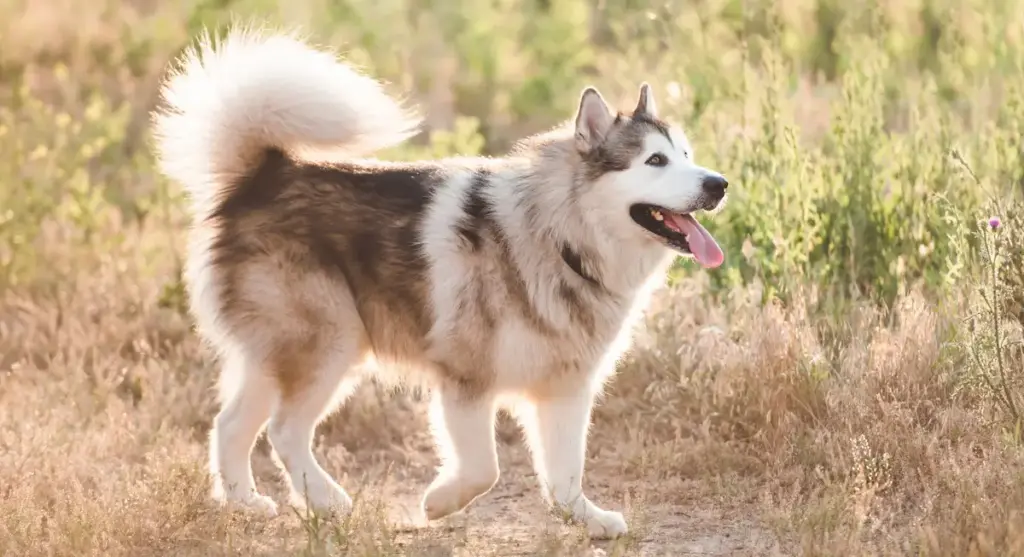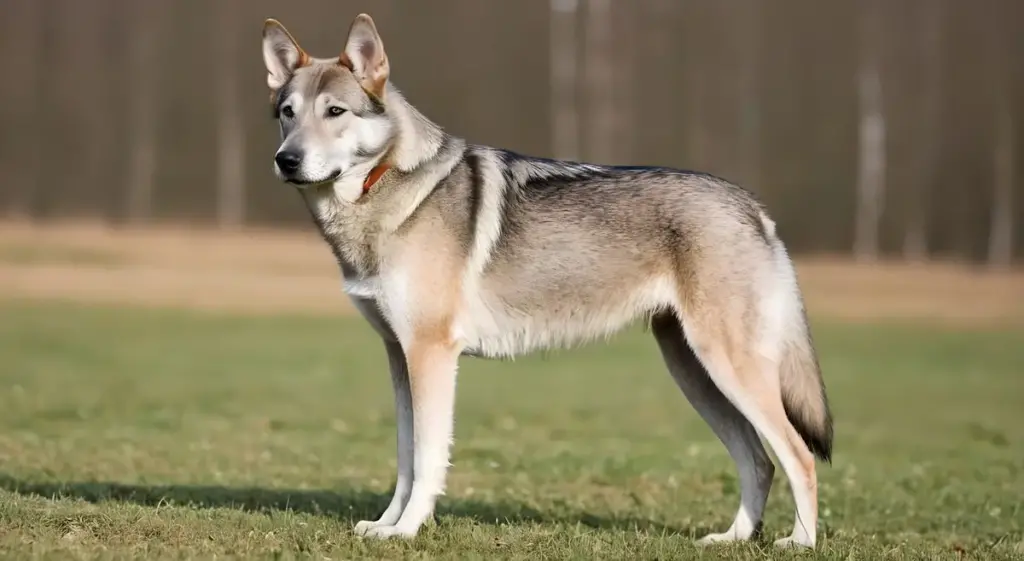Step into wolf-like canines, where breeds like Siberian Huskies, Alaskan Malamutes, and Czechoslovakian Vlcaks reign. Their looks are not just for show; these breeds are shaped by their survival needs in harsh environments. Despite their wild appearances, they show typical dog behaviors.
Each breed has its personality. So, before you welcome one into your family, do your homework and look closely at their temperament. It’s like picking out a new roommate—you want to ensure you’ll get along.
These canines are not your everyday pets. They demand particular care, much like shepherd dogs or energetic breeds. Start training them early and keep their minds engaged. They’re not just physical creatures, they’re thinkers too. Get to know their unique needs. Doing so will help you provide them with the most nurturing environment possible.
Consider this your introduction, a gateway into a world of knowledge. There’s so much more to learn about these fascinating breeds. The insights you’ll gain will be vast and rewarding as you journey further.
Remember, these breeds aren’t for everyone. They need an owner who’s up for the challenge. But if you’re willing to work, the bond you’ll form will be unlike any other. So, research thoroughly, prepare well, and embark on this rewarding journey with your new wolf-like companion.
Key Takeaways
- The Siberian Husky, Alaskan Malamute, and Czechoslovakian Vlcak carry wolf-like traits in their appearance.
- Born in lands where wolf-like attributes aid survival, these breeds are testaments to their origins.
- Though their looks might fool you, remember they’ve got the heart of a dog, not a wolf.
- Each breed carries a distinct personality. Do your homework before bringing one home.
- They might mirror wolves, but they’re domestic dogs at heart. They need a vet’s care, good food, and a safe home.
Let’s talk about each one.
The Siberian Husky – a breed known for endurance and a wolf-like coat. Native to Siberia, they were bred for hard work in cold environments. Don’t be fooled by their fierce look, they’re friendly, energetic, and love companionship.
The Alaskan Malamute – another frost survivor. This breed is larger, stronger, and built for heavy loads. Despite their might, they’re affectionate, loyal, and playful.
The Czechoslovakian Wolfdog is a newcomer with a direct wolf lineage. It’s smart, versatile, and needs constant mental stimulation. It’s not for the faint-hearted.
Remember, owning a dog isn’t just about the looks. Dogs require commitment and care and need regular vet checks, a balanced diet, and a secure environment.
So, if you’re ready to commit, and you’ve done your research, why not consider one of these magnificent breeds? They may look like wolves, but they’re man’s best friend at heart. An adventure awaits with each one. It’s up to you to take the first step.
Exploring Northern Breeds
Dive in with me and learn about the Northern breeds—the Siberian Husky, Alaskan Malamute, and Alaskan Klee Kai. Each breed is unique and a marvel in its own right.
First, meet the Siberian Husky. Its eyes, either ice-blue or a captivating mix, can hold your gaze. Their coats? A beautiful blend of colors, pure white or a striking black-and-white mix. They’re not couch potatoes. These dogs need their daily run and play.
Next, the Alaskan Malamute. It’s bigger and has a thicker coat. Its colors are grey and white, black and white, red and white, or pure snow white. Remember, they once pulled sleds. They need exercise, and lots of it.
Lastly, let’s meet the Alaskan Klee Kai. It’s a small breed, but don’t be fooled. Their coats come in various colors, and their need for physical activity is just as intense as that of their larger cousins.

Understanding Shepherd Dogs
Let’s shift our focus from the frosty North to the unique class of Shepherd Dogs. These dogs are known for their smarts, loyalty, and versatile skills. They’re strong, quick, and eager to work. Built with an inner sense of duty, they’re always ready to protect, lead, and serve. They’re a favorite among families and workplaces.
When it comes to training shepherds, start early. Be consistent. Keep their minds busy. They’re smart and need tasks that challenge them. Train them with a firm hand, but shower them with love too. Be patient. Understand them. In return, they’ll give you loyalty and protection. They’ll make you feel like you belong.
Quick Summary: Shepherd dogs are intelligent, loyal, and versatile. They’re robust, agile, and hardworking with a built-in sense of duty. Training should start early, with consistency and intellectual stimulation. A firm but loving approach to training is best. With patience and understanding, these dogs form lasting bonds and provide a sense of belonging and protection.
Your Next Steps: Want to make a shepherd dog part of your family or workplace? Start by understanding their characteristics and training needs. Early socialization, consistency, and mental stimulation are key to training. Enjoy the journey of building a strong bond with your future shepherd dog.
Wolf-Like Appearance Breeds
Specific dog breeds strikingly mirror this aesthetic for those captivated by the wild grace of wolves. Consider the Siberian Husky, the Alaskan Malamute, or the Czechoslovakian Vlcak. These breeds boast a distinct, wolf-like look that never fails to turn heads.
Each of these breeds hails from parts of the world where their wolf-like features were essential for survival. This, in turn, has shaped their appearance today. But, remember, it’s not just about looks. These breeds also bring the joy and companionship inherent to all dogs.
Now, let’s talk behavior. While their wolf-like appearance might suggest otherwise, these breeds behave very much like the canines they are. Each breed has its unique temperament, with traits that set it apart.
Yes, they might look like wolves, but it’s their canine heart that you’ll fall in love with. So, if you want to bring one of these breeds into your home, research their temperament. This will help you better understand what to expect and how to provide the best possible home for your new furry friend.
Meeting Energetic Breeds
Let’s talk dogs, not just dogs – we focus on the high-energy ones. The American Eskimo Dog, the Golden Retriever, and the Labrador Retriever are some prime examples.
The American Eskimo Dog, a member of the Spitz family, is a lively character with a twist. Yes, they are active, but they also possess a gentle temperament. Their exercise needs? Moderate. They’re not asking for a marathon, just a nice balance of activity.
Then, there’s the Golden Retriever. Friendly to the core and as vibrant as they come, they need exercise, and regular exercise at that. Without it, they could become overweight. Active homes, where exercise is a family affair, are perfect for this breed.
Finally, we have the Labrador Retriever. America’s favorite dog, no less. They ask for regular exercise to channel their high energy into positive behavior.
Aside from their exercise needs, these breeds have something else in common: They are social animals. They thrive in environments filled with interaction and companionship.
Understanding these traits and needs is key for any potential owner. When you’re aware, you can meet their needs effectively. So, remember: balance for the American Eskimo, regular activity for the Golden Retriever, and ample interaction for all. It’s as simple as that.

Discovering Intelligent Breeds
Join me, as we delve into the world of intelligent dog breeds, with the Border Collie and Poodle at the helm. They shine, not just for their beauty, but also for their incredible problem-solving skills. They’re quick learners, always eager for more. Are you training them? It’s all about consistency and positive reinforcement. It’s a joy to watch them grow with it. But remember, their sharp minds need constant stimulation. It’s a commitment, but one that comes with immense rewards.
Switching gears, let’s talk about the Golden Retriever and Beagle. They’re not just intelligent; they have grooming needs that’ll keep you on your toes too. With its thick, water-repellent coat, the Golden Retriever needs regular brushing. The Beagle, on the other hand, with its short hair, needs frequent baths. It’s less about intense grooming and more about cleanliness.
Remember, grooming isn’t just about keeping your dog pretty. It’s about making sure they’re healthy and happy. So, grab that brush, get the bath ready, and ensure your intelligent companion is at their best.
Intelligent dog breeds like the Border Collie and Poodle require consistent training and mental stimulation. On the other hand, breeds like the Golden Retriever and Beagle require regular grooming. It’s a commitment, but the rewards of a healthy, happy, and smart companion are well worth it.
Choosing Family-Friendly Breeds
When picking a family dog, consider more than just smarts and looks. Think about temperament and sociability. Good choices are Golden Retrievers and Boxers. They’re gentle, playful, and great with kids. Training? Patience, positive reinforcement, and consistency are key. Start socializing early. Introduce them to different environments, people, and animals. It boosts their confidence and adaptability.
Golden Retrievers and Boxers thrive on love. They give back in affection and companionship. But remember, your lifestyle, commitment, and understanding of the breed’s needs must match. That’s crucial in choosing the right breed.
Remember these golden rules:
- Look beyond intelligence and grooming – temperament and sociability matter too.
- Choose breeds like Golden Retrievers and Boxers for their gentle and playful nature.
- Stick to patience, positive reinforcement, and consistency in training.
- Early socialization is a must – expose them to different environments, people, and animals.
- Ensure your lifestyle, commitment, and understanding of the breed’s needs align.
Considering Health Concerns
Are you choosing a dog breed? You’ve got to think about health. You see, each breed comes with its own set of health risks. These can affect both the pup’s quality of life and your wallet. Let’s take wolf-like canines. These guys have a higher chance of hip dysplasia. It’s a painful condition that might need surgery.
You need to discuss food with your vet. Why, you ask? Some breeds have special dietary needs, and others might easily become overweight. So, what’s the solution? Regular exercise and vet visits can keep health issues at bay.
But remember, as a future dog parent, your job is to keep your furry friend safe. So, you need to know what health problems might pop up. This knowledge can help you make the right choice and give your new pet a loving home.
Here’s your action plan:
- Research the health risks for the dog breed you’re interested in.
- Have a chat with your vet about your dog’s dietary needs.
- Make sure you have a plan for regular exercise and vet visits.
- Be well-informed about potential health problems.
Ultimately, it’s all about giving your new pet the best life possible. So, stay informed, stay proactive. Your future canine companion is counting on you!
